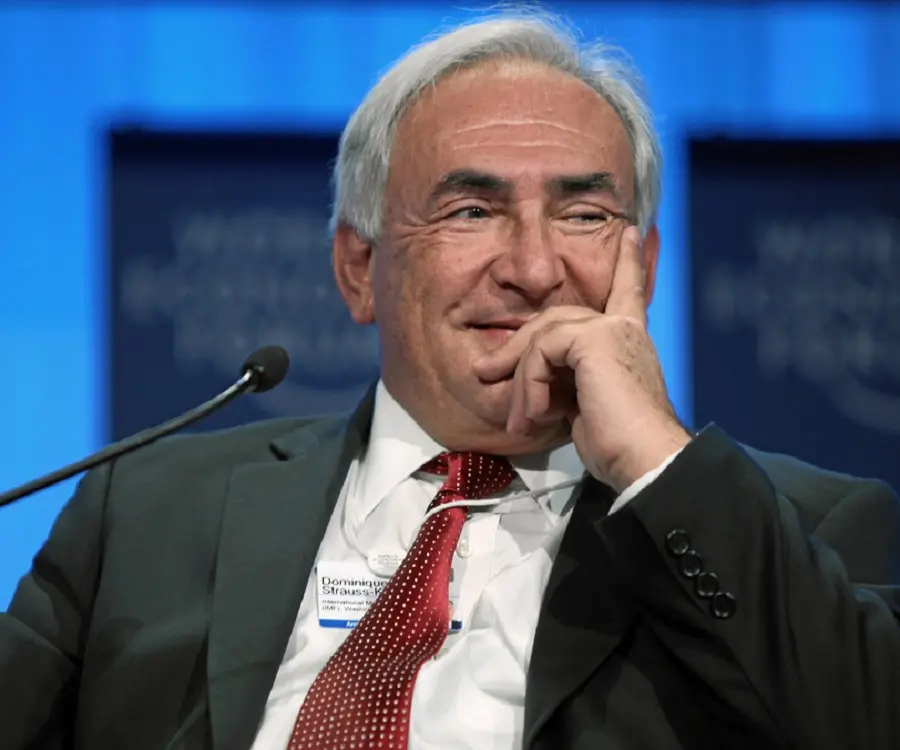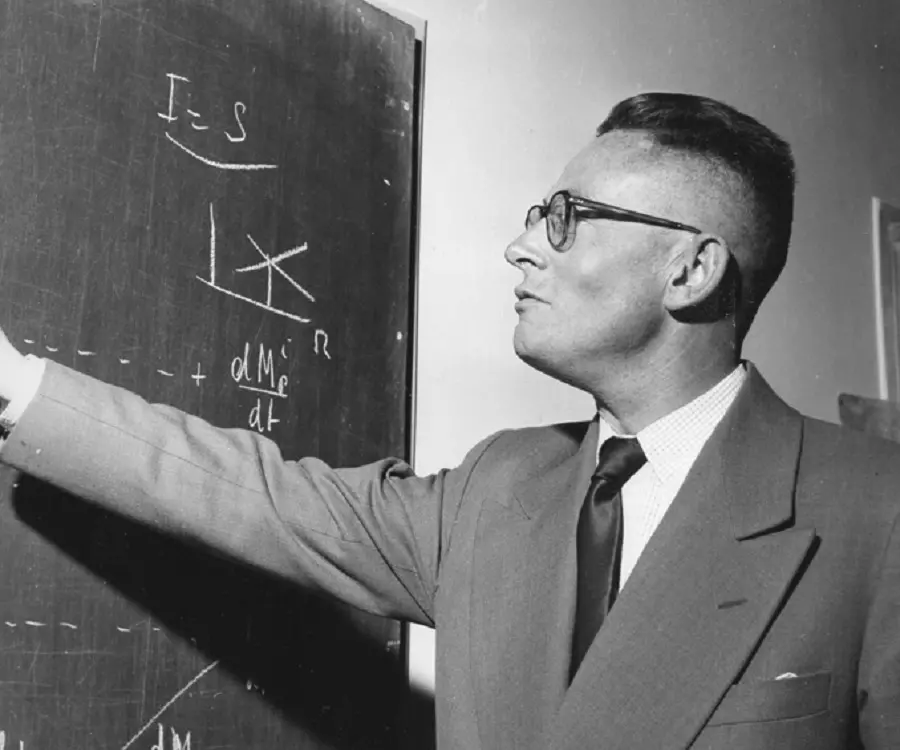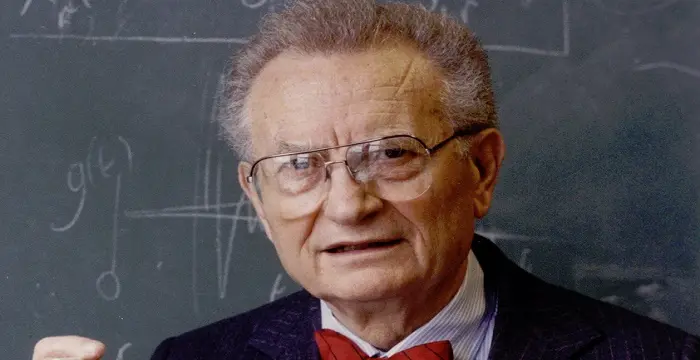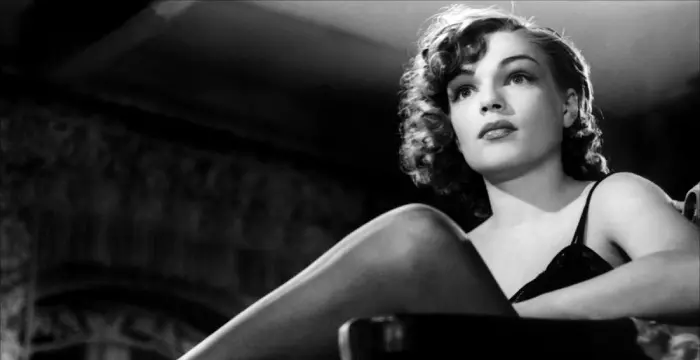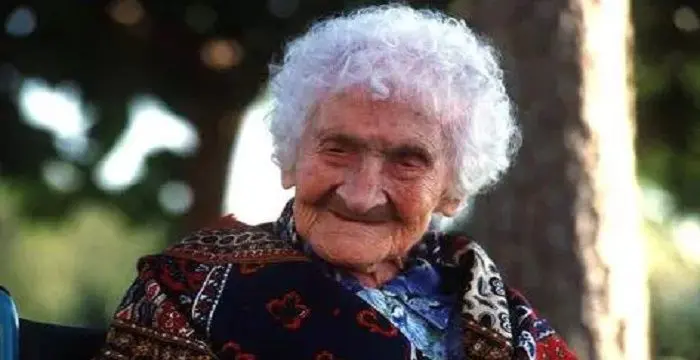
Maurice Allais - Intellectuals & Academics, Family and Childhood
Maurice Allais's Personal Details
Maurice Allais was a French Economist who won the 1998 Nobel Memorial Prize in Economics
| Information | Detail |
|---|---|
| Birthday | May 31, 1911 |
| Died on | October 9, 2010 |
| Nationality | French |
| Famous | Intellectuals & Academics, Economists |
| Universities |
|
| Birth Place | Paris, France |
| Gender | Male |
| Sun Sign | Gemini |
| Born in | Paris, France |
| Famous as | Economist |
| Died at Age | 99 |
// Famous Intellectuals & Academics
Bertil Gotthard Ohlin
Bertil Gotthard Ohlin was a famous Swedish economist. This biography profiles his childhood, family life & achievements.
Emily Greene Balch
Emily Greene Balch was an American economist, sociologist and pacifist who won the 1946 Nobel Peace Prize. This biography of Emily Greene Balch provides detailed information about her childhood, life, achievements, works & timeline.
Martin Buber
One of the greatest philosophers to have ever walked on earth, Martin Buber contributions to philosophy is a long-standing one. Explore all about his profile, childhood, life and timeline here.
Maurice Allais's photo
Who is Maurice Allais?
Maurice Allais was a French economist and a Nobel Laureate, well-known for his work on the efficient use of resources and understanding of market behavior. Born into a working class family in the early twentieth century, he lost his father in the First World War when he was barely four years old. Despite his difficult early life, he went on to qualify as an engineer and began his career at Nantes Mines and Quarries Service. During the German occupation of France in the early 1940s, he had very little work and seized the opportunity to teach himself economics. Subsequently, he moved to teaching and began publishing papers, which had more than theoretical value. In the years following the Second World War, his works proved particularly important and helped the state owned monopolies to expand at a tremendous speed. Because he wrote in French and did not encourage translation, it took him a long time to get international recognition, which was his due. Outside economics, he also worked on physics and history and was one of the driving forces behind establishing the European Economic Community.
// Famous Economists
Bertil Gotthard Ohlin
Bertil Gotthard Ohlin was a famous Swedish economist. This biography profiles his childhood, family life & achievements.
Emily Greene Balch
Emily Greene Balch was an American economist, sociologist and pacifist who won the 1946 Nobel Peace Prize. This biography of Emily Greene Balch provides detailed information about her childhood, life, achievements, works & timeline.
Paul Samuelson
Nobel laureate Paul Anthony Samuelson is referred to as the ‘Father of Modern Economics’. This biography profiles his childhood, life, career, achievements and interesting facts about him.
Childhood & Early Years
Maurice Félix Charles Allais was born on 31 May 1911 into a working class family in Paris. His parents owned a small cheese shop in the city. It is not known if he had any siblings.
In August 1914, when he was barely three years old, his father was conscripted in the army and sent to fight in the First World War. Within months, he was taken prisoner by the Germans and kept in a POW camp in Germany, where he died of typhus on March 27, 1915.
Maurice was barely four years old then but the incident left a lifelong mark on his mind. Many believe his commitment to European Construction stemmed from such a personal bereavement.
Meanwhile in Paris, Maurice was raised by his mother under difficult conditions. As a result, he started his formal education in 1919, three years behind schedule, at a local state school in the rue d’Alésia. Here all his classmates were much junior to him.
Fortunately, the headmaster of the school allowed him to skip some classes. Thus by October 1921, he was able to catch up with other boys of the same age group and began his secondary education at the Lycée Lakanal in Sceaux in time.
In 1923, his mother married a second time. It is possible that sometime during this period, he was sent to live with his grandfather, who was a carpentry worker. However, it did not interfere with his secondary education. Contrarily, he excelled in his studies.
In 1928, he received his high school baccalaureate diploma in Latin and Science and in 1929 the double baccalaureate diplomas in Mathematics and Philosophy. However, history had always been his favorite subject and therefore, he now wanted to study the subject at the Ecole des Chartes.
His mathematics teacher convinced him to attend Ecole Polytechnique, a prestigious institute for science and engineering in Paris. As a preparatory measure, he took special classes in mathematics for one more year at Lycée Lakanal.
Thereafter, he appeared for the entrance test at Ecole Polytechnique. Although he passed the examination, he was disappointed with the ranking and so he decided to reappear for the entrance examination in the following year.
He then started taking special classes at Louis-le-Grand high school, spending the night at his mother’s boutique. In 1931, he entered Ecole Polytechnique with a very high ranking.
While studying there, he went to the USA on a study tour. At that time, the country was plagued by the Great Depression and he was appalled by the quality of life he witnessed there. Unknown to him as yet, the experience would one day have a great influence on his choice of career.
In 1933, he graduated from Polytechnique, standing first in his class. Thereafter, he went through the compulsory military service; first in the Artillery School at Fontainebleau and then in the Alpine Army.
Intending to join the government service, he next entered École Nationale Supérieure des Mines de Paris (National School of Mines in Paris). On graduating from there in 1936, he began his professional life as an engineer in the Mines Public Service.
Early Career
On joining the service in October 1936, Maurice Allais was briefly posted at Public Works Ministry, where he worked on an economic enquiry going on in the coal market. Later in April 1937, he was promoted to the post of a senior civil service engineer and sent to Nantes.
Thus at the age of twenty-six, he was put in charge of Nantes Mines and Quarries Service, with a jurisdiction covering five departments. In addition, he was also required to supervise a number of controls, especially the railways.
In 1939, at the onset of the Second World War, he was recalled by the Alpine Army. As a Lieutenant, he was put in command of a heavy artillery battery and sent to fight in the area of Briancon in the Italian Front.
However, he saw real action only between 10 June 1940, the day Italy declared war on France and 25 June 1940, the day the armistice was signed. Thereafter in July 1940, he returned to his post at Nantes, which was already under German occupation.
As an Economist
During the Second World War, there was very little work at Nantes. Remembering what he experienced during the Great Depression in the USA, Maurice Allais began to contemplate on similar situations, trying to find an appropriate solution for it.
Subsequently from 1941, along with carrying out his administrative duties, he started teaching himself economics. He published his first work, titled ‘À la recherche d'une discipline économique’ (In Search of an Economic Discipline – Treatise on Pure Economics), two years later in 1943.
In the same year, he returned to Paris as the Director of le Bureau of Mines Documentation and Statistics. Concurrently from 1944, he became the Professor of Economic Analysis at Paris’s École Nationale Supérieure des Mines, a position he held until 1988.
Also from October 1946 to 1980, he was the Director of research at the Centre National de la Recherche Scientifique (C.N.R.S.) and the head of the Centre for Economic Analysis, an institute affiliated both to the École des Mines and to the C.N.R.S.
Apart from that, in 1947, Allais was appointed a professor at the Institute of Statistics at the University of Paris, a position he held up to 1968. As a result of such concurrent positions, he had to work very hard, clocking at least eighty hours per week.
In spite of that, he found time to publish a number of papers and write a number of articles in various journals. Among the papers he wrote, ‘Économie et intérêt’ (1947) was the most significant. Two other important works of this period were ‘Economie pure et rendement social’ (1945), ‘Abondance ou misère’ (1946).
In 1948, Allais was relieved from his duties at le Bureau of Mines Documentation and Statistics. This enabled him to devote his entire time towards his studies. He thus was able to make major contributions to economic theories such as the decision theory and monetary policy.
As an economist, he mainly concentrated on conditions that would generate maximum efficiency in economy. Analysis of the factors that influence the distribution of income was another of his expertise. He also started working on behavioral economics, but did not precede much.
Pursuing Physics & History
Concurrently with working on economics, Maurice Allais continued to work on engineering and in 1949, received doctorate in engineering from the University of Paris, Faculty of Science. Then from 1952 to 1960, he performed many experiments in the fields of gravitation, special relativity and electromagnetism.
In 1954, experimenting with a ‘paraconical’ pendulum, which he had invented, he noticed that the pendulum moved faster than usual when the moon passed in front of the Sun. On further analysis, he came to conclusion that the gravitational pull of the earth appears to increase during solar eclipse.
He also remained equally interested in history. In 1961, in spite of his busy schedule, he started writing ‘Essor et déclin des civilisations-Facteurs economiques, (Rise and Fall of Civilizations - Economic Factors), a work that took seven years to complete.
In International Politics
Maurice Allais had always been a champion of European unity. Since the Second World War, he began taking active part in different national as well as international conferences aiming to establish European Construction. In 1958, his work led to the formation of European Economic Community.
Next in 1959, he founded ‘Movement for Free Society’, a liberal para-political organization and remained its general delegate till 1962.
When in 1964, the Center of Strategic Studies of Georgetown University organized an international conference called NATO in Quest of Cohesion, Allais was appointed by it to report on the proceedings of its meetings.
Meanwhile in 1958, he was appointed a Distinguished Visiting Professor at the Thomas Jefferson Center of the University of Virginia. Later from 1967 to 1970, he held teaching positions at the Graduate Institute of International Studies in Geneva and from 1970 to 1985 at the University of Paris-X.
On May 31, 1980, on reaching the age limit for retirement he retired from the civil service, but continued working at Ecole Nationale Supérieure des Mines until 1988. He also kept in touch with the Centre National de la Recherche Scientific and thus continued his association with teaching and research.
Major Works
Maurice Allais is best remembered for his groundbreaking theoretical works, in which he tried to balance social benefits with economic efficiency. In his first major work, ‘A la Recherche d'une Discipline Economique’ published in 1943, he mathematically proved that equilibrium pricing can lead to an efficient market system.
His 1947 book, ‘Economie et Intérêt’, is another of his major works involving capital and interest. In it, he had proved that to maximize real income, the optimum rate of interest should be equal to the rate of growth of the economy.
Awards & Achievements
In 1977, he was named an officer of the Legion of Honour and in 2005 was made grand officer by the French Government.
In 1978, he was awarded the Gold Medal by the Centre National de la Recherche Scientifique (C.N.R.S.) for his lifetime work. Until then, he was the only economist to receive the honor.
In 1988 Maurice Allais received the Nobel Memorial Prize in Economics "for his pioneering contributions to the theory of markets and efficient utilization of resources".
He was a member of the Institut de France, the U.S. National Academy of Sciences, the Lincean Academy in Italy, and the Russian Academy of Sciences.
Personal Life & Legacy
On 6 September 1960, at the age of almost fifty, Maurice Allais married Jacqueline Bouteloup. She was initially his student. Later from 1952 until her sudden death in 2003, she had been a close collaborator in all his projects. The couple had a daughter.
On October 9, 2010, Allais died of natural causes at his home in Saint-Cloud. He was then ninety-nine years old and was survived by his daughter.
The choice problem he designed in 1953 has been named ‘Allais Paradox’ in his honor. Through it, he showed that there was an inconsistency in the predictions of expected utility theory when it is compared with the actual observed choices.
The ‘Allais effect’ which refers to the anomalous behavior of pendulums purportedly observed during a solar eclipse, has been named after him. The phenomenon was first observed by him on June 30, 1954 and then on October 2, 1959.
// Famous Gemini Celebrities peoples
Wentworth Miller
Wentworth Miller is an American actor and screenwriter who achieved recognition for his role in the TV series ‘Prison Break’.
Joyce Meyer
Joyce Meyer is a Christian author and speaker. This biography provides detailed information about her childhood, life, achievements, works & timeline
Zoe LaVerne
Zoe LaVerne is an American musical.ly star. Check out this biography to know more about her family, personal life, including her age, birthday, etc.
Maurice Allais's awards
| Year | Name | Award |
|---|---|---|
Other | ||
| 0 | 1988 - Nobel Memorial Prize in Economics | |
Maurice Allais biography timelines
- // 31st May 1911Maurice Félix Charles Allais was born on 31 May 1911 into a working class family in Paris. His parents owned a small cheese shop in the city. It is not known if he had any siblings.
- // Aug 1914 To 27th Mar 1915In August 1914, when he was barely three years old, his father was conscripted in the army and sent to fight in the First World War. Within months, he was taken prisoner by the Germans and kept in a POW camp in Germany, where he died of typhus on March 27, 1915.
- // 1919Meanwhile in Paris, Maurice was raised by his mother under difficult conditions. As a result, he started his formal education in 1919, three years behind schedule, at a local state school in the rue d’Alésia. Here all his classmates were much junior to him.
- // 1921Fortunately, the headmaster of the school allowed him to skip some classes. Thus by October 1921, he was able to catch up with other boys of the same age group and began his secondary education at the Lycée Lakanal in Sceaux in time.
- // 1923In 1923, his mother married a second time. It is possible that sometime during this period, he was sent to live with his grandfather, who was a carpentry worker. However, it did not interfere with his secondary education. Contrarily, he excelled in his studies.
- // 1928In 1928, he received his high school baccalaureate diploma in Latin and Science and in 1929 the double baccalaureate diplomas in Mathematics and Philosophy. However, history had always been his favorite subject and therefore, he now wanted to study the subject at the Ecole des Chartes.
- // 1931He then started taking special classes at Louis-le-Grand high school, spending the night at his mother’s boutique. In 1931, he entered Ecole Polytechnique with a very high ranking.
- // 1933In 1933, he graduated from Polytechnique, standing first in his class. Thereafter, he went through the compulsory military service; first in the Artillery School at Fontainebleau and then in the Alpine Army.
- // 1936Intending to join the government service, he next entered École Nationale Supérieure des Mines de Paris (National School of Mines in Paris). On graduating from there in 1936, he began his professional life as an engineer in the Mines Public Service.
- // Oct 1936 To Apr 1937On joining the service in October 1936, Maurice Allais was briefly posted at Public Works Ministry, where he worked on an economic enquiry going on in the coal market. Later in April 1937, he was promoted to the post of a senior civil service engineer and sent to Nantes.
- // 1939In 1939, at the onset of the Second World War, he was recalled by the Alpine Army. As a Lieutenant, he was put in command of a heavy artillery battery and sent to fight in the area of Briancon in the Italian Front.
- // 1941Subsequently from 1941, along with carrying out his administrative duties, he started teaching himself economics. He published his first work, titled ‘À la recherche d'une discipline économique’ (In Search of an Economic Discipline – Treatise on Pure Economics), two years later in 1943.
- // 1943Maurice Allais is best remembered for his groundbreaking theoretical works, in which he tried to balance social benefits with economic efficiency. In his first major work, ‘A la Recherche d'une Discipline Economique’ published in 1943, he mathematically proved that equilibrium pricing can lead to an efficient market system.
- // 1944 To 1988In the same year, he returned to Paris as the Director of le Bureau of Mines Documentation and Statistics. Concurrently from 1944, he became the Professor of Economic Analysis at Paris’s École Nationale Supérieure des Mines, a position he held until 1988.
- // 1946 To 1980Also from October 1946 to 1980, he was the Director of research at the Centre National de la Recherche Scientifique (C.N.R.S.) and the head of the Centre for Economic Analysis, an institute affiliated both to the École des Mines and to the C.N.R.S.
- // 1947 To 1968Apart from that, in 1947, Allais was appointed a professor at the Institute of Statistics at the University of Paris, a position he held up to 1968. As a result of such concurrent positions, he had to work very hard, clocking at least eighty hours per week.
- // 1947His 1947 book, ‘Economie et Intérêt’, is another of his major works involving capital and interest. In it, he had proved that to maximize real income, the optimum rate of interest should be equal to the rate of growth of the economy.
- // 1948In 1948, Allais was relieved from his duties at le Bureau of Mines Documentation and Statistics. This enabled him to devote his entire time towards his studies. He thus was able to make major contributions to economic theories such as the decision theory and monetary policy.
- // 1953The choice problem he designed in 1953 has been named ‘Allais Paradox’ in his honor. Through it, he showed that there was an inconsistency in the predictions of expected utility theory when it is compared with the actual observed choices.
- // 1954In 1954, experimenting with a ‘paraconical’ pendulum, which he had invented, he noticed that the pendulum moved faster than usual when the moon passed in front of the Sun. On further analysis, he came to conclusion that the gravitational pull of the earth appears to increase during solar eclipse.
- // 30th Jun 1954 To 2nd Oct 1959The ‘Allais effect’ which refers to the anomalous behavior of pendulums purportedly observed during a solar eclipse, has been named after him. The phenomenon was first observed by him on June 30, 1954 and then on October 2, 1959.
- // 1958Maurice Allais had always been a champion of European unity. Since the Second World War, he began taking active part in different national as well as international conferences aiming to establish European Construction. In 1958, his work led to the formation of European Economic Community.
- // 1959 To 1962Next in 1959, he founded ‘Movement for Free Society’, a liberal para-political organization and remained its general delegate till 1962.
- // 1961He also remained equally interested in history. In 1961, in spite of his busy schedule, he started writing ‘Essor et déclin des civilisations-Facteurs economiques, (Rise and Fall of Civilizations - Economic Factors), a work that took seven years to complete.
- // 1964When in 1964, the Center of Strategic Studies of Georgetown University organized an international conference called NATO in Quest of Cohesion, Allais was appointed by it to report on the proceedings of its meetings.
- // 1977 To 2005In 1977, he was named an officer of the Legion of Honour and in 2005 was made grand officer by the French Government.
- // 1978In 1978, he was awarded the Gold Medal by the Centre National de la Recherche Scientifique (C.N.R.S.) for his lifetime work. Until then, he was the only economist to receive the honor.
- // 31st May 1980 To 1988On May 31, 1980, on reaching the age limit for retirement he retired from the civil service, but continued working at Ecole Nationale Supérieure des Mines until 1988. He also kept in touch with the Centre National de la Recherche Scientific and thus continued his association with teaching and research.
- // 1988In 1988 Maurice Allais received the Nobel Memorial Prize in Economics "for his pioneering contributions to the theory of markets and efficient utilization of resources".
- // 9th Oct 2010On October 9, 2010, Allais died of natural causes at his home in Saint-Cloud. He was then ninety-nine years old and was survived by his daughter.
// Famous French peoples
Simone Signoret
Simone Signoret was a French actress who became the first French person to win an Academy Award. Check out this biography to know about her childhood, family life, achievements and other facts related to her life.
Jade Weber
Scroll down this bio to find out everything about French model Jade Weber. Be it fun facts, birthday, trivia or details of her personal and family life, you’ll find everything here.
Micheline Roquebrune
Micheline Roquebrune is a petite Moroccan-French painter best known as the third wife the legendary Scottish actor Sir Sean Connery. Check out this biography to know about her birthday, childhood, family life, achievements and fun facts about her.
Alex Lange
Alex Lange is a French-South African model, who is quite popular on Instagram. Check out this biography to know about his childhood, family life, achievements and fun facts about him.
Tina Kunakey
Tina Kunakey Di Vita is a model and wife of the French actor Vincent Cassel. Check out this biography to know about her birthday, childhood, family life, achievements and fun facts about her.
Jeanne Calment
Jeanne Calment was a French supercentenarian who had the longest confirmed lifespan in human history. Check out this biography to know about her childhood, family, personal life, death, etc.
Maurice Allais's FAQ
What is Maurice Allais birthday?
Maurice Allais was born at 1911-05-31
When was Maurice Allais died?
Maurice Allais was died at 2010-10-09
Where was Maurice Allais died?
Maurice Allais was died in Saint-Cloud
Which age was Maurice Allais died?
Maurice Allais was died at age 99
Where is Maurice Allais's birth place?
Maurice Allais was born in Paris, France
What is Maurice Allais nationalities?
Maurice Allais's nationalities is French
What was Maurice Allais universities?
Maurice Allais studied at University of Paris, École Polytechnique, Mines ParisTech, University of Toronto Mississauga, Lycée Lakanal
What is Maurice Allais's sun sign?
Maurice Allais is Gemini
How famous is Maurice Allais?
Maurice Allais is famouse as Economist



